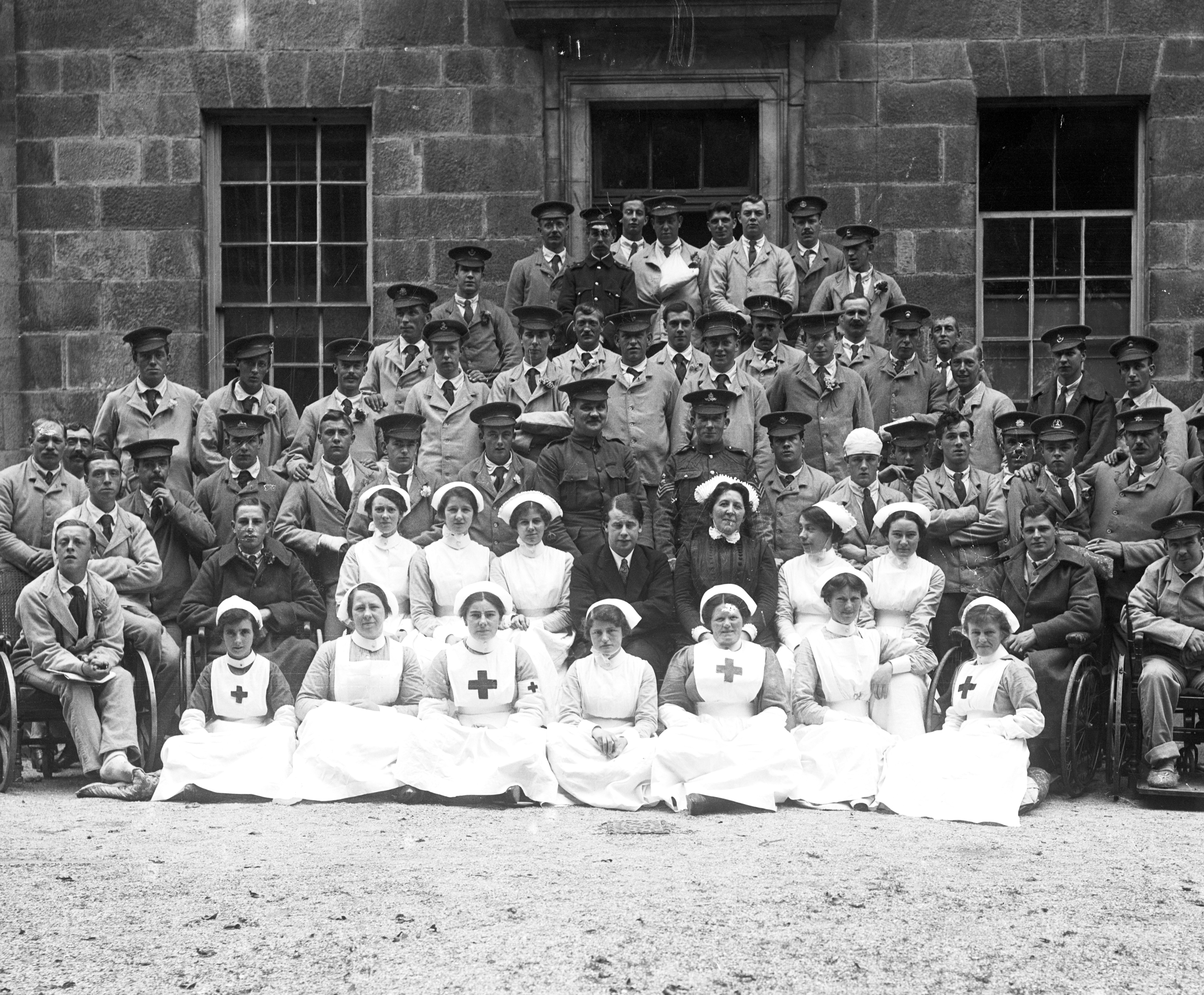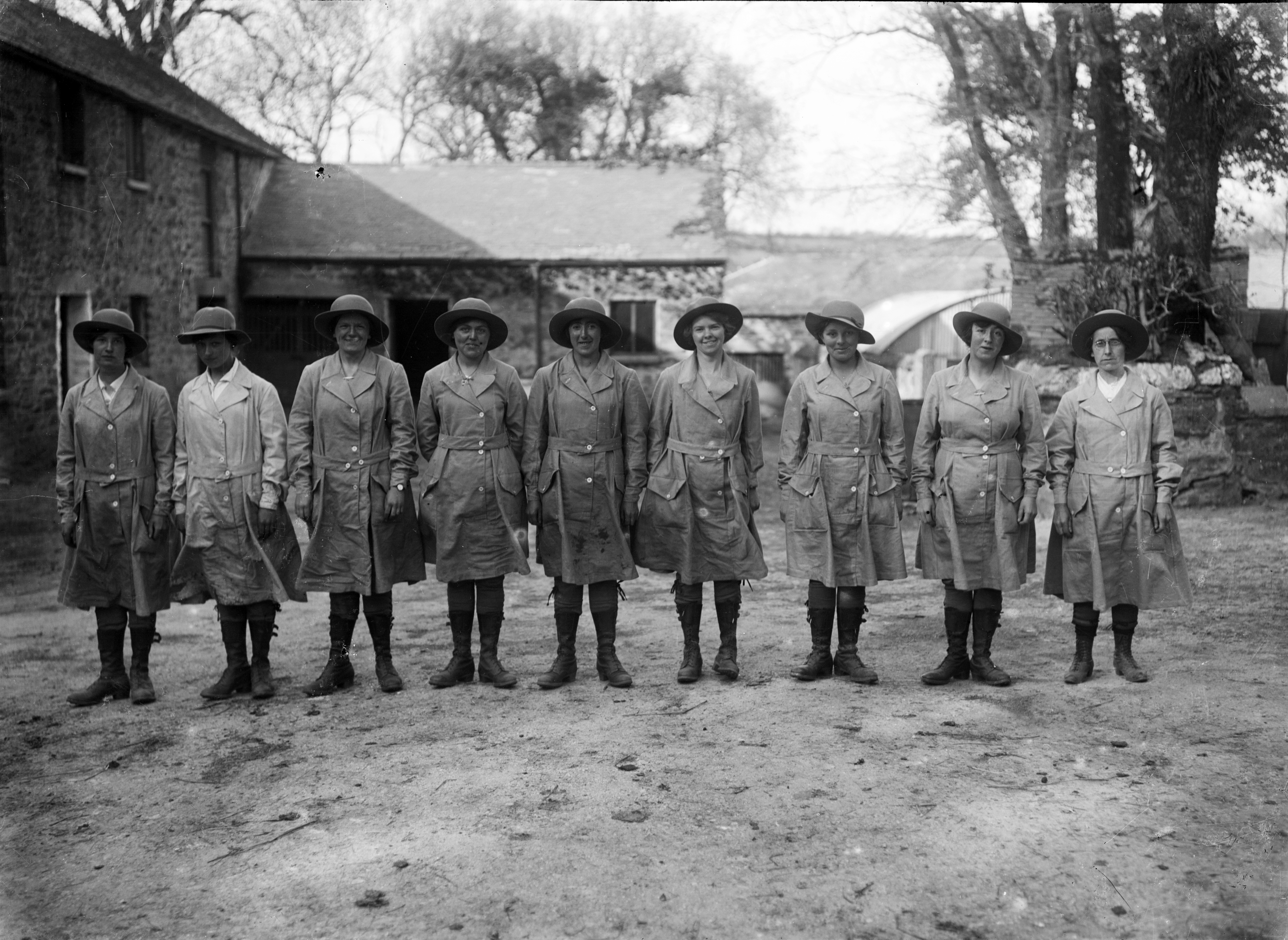Women’s Land Army Digitised Image
The digitised image above is of a member of the Women’s Land Army, sharpening the teeth of a reaper blade at Tregavethan Farm – a Women’s Land Army training centre. The woman’s uniform consists of boots, gaiters, felt hat and pale fabric overalls. The photographer was Arthur William Jordan.
Due to the shortage of men who had gone off to fight during the First World War, farmers faced a shortage of crucial labour. This void of bodies to work the land was readily supplemented by the women who made up the Women’s Land Army, they took up the mantle of the young labourer men who had gone to war, in order to ensure continued production of Britain’s agriculture industry during the War.
By 1917 there were nearly 260,000 women working as farm labourer’s, with 23,000 of these women working in the Land Army. The roles taken by these women ranged from milking cows, to ploughing to picking fruit and vegetables.
Tregavethan Farm, the backdrop for this image, was a prominent training centre near Truro for the Women’s Land Army where the training sessions for the Land Army in Cornwall were held, along with ploughing competitions to further experience. Little is known about the young women in the photo or her contempories as most records have sadly been lost, but many photographs still thankfully remain. Preserved at the Royal Cornwall Museum, this item is one of a collection of 135 Cornish Women’s Land Army photos and are a vital source in showcasing the role women played in the war effort.
The significance of the role of women in the Women’s Land Army though does not just cover the replacement of men in the vital industry of agriculture and food management during the First World War, but these women and the role they played also contributed to the success of the women’s suffrage movement in Britain. The introduction of women – like those who served in the Women’s Land Army – into a traditionally male workplace helped to show what women were capable of and was an instrumental factor in the passing of the 1918 Act of Parliament which granted married women over 30 the right to vote.
Digitised image chosen by Ben Trotter, Citizen Curator.





